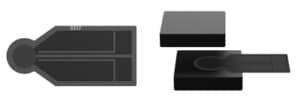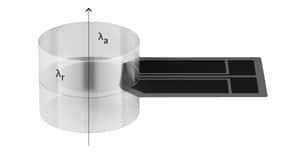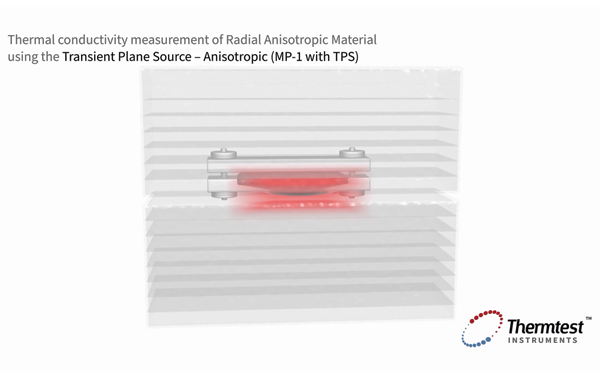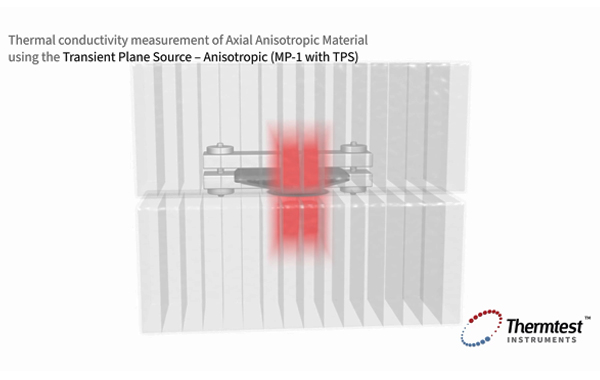3-Dimensional > Anisotropic
Directional Measurement of Anisotropic Materials
TPS Anisotropic Module allows the measurement of directional thermal conductivity and thermal diffusivity properties of anisotropic materials such as layered materials, fiber-reinforced plastics, etc.
When using the TPS system to evaluate materials with direction dependent thermal properties, the following assumptions are made:
- The main directions in the material to be investigated are orthogonal and can be described in terms of a-, b- and c-axes.
- We must further assume the properties along the b- and c-axes (planar direction) are the same and the properties along the a- axis (normal direction) are different, as the experimental technique is only valid for situations that satisfy this condition.
When making measurements on anisotropic materials the TPS sensor is placed between the plane surface of the two sample halves of the material under investigation. It is particularly important to orient the sample halves and the TPS sensor correctly according to the main directions in the material (Fig 1).

Figure 1. TPS sensor placement for standard test measurement on isotropic materials.
That is the plane of the sensor containing the heat source (double spiral) would be placed so that it would be perpendicular to the normal direction (a-axis) and parallel with the planar direction (the plane formed by the b- and c-axes).
Only one measuring position of the sensor is possible and for that reason it is necessary to know the specific heat per unit volume of the material in order to resolve the directional thermal transport properties of the material in the two planes. This testing can be done in the standard two-sided or single-sided formats.

Figure 2. Placement of the TPS sensor in relation to the main directions of orientation in an anisotropic sample


